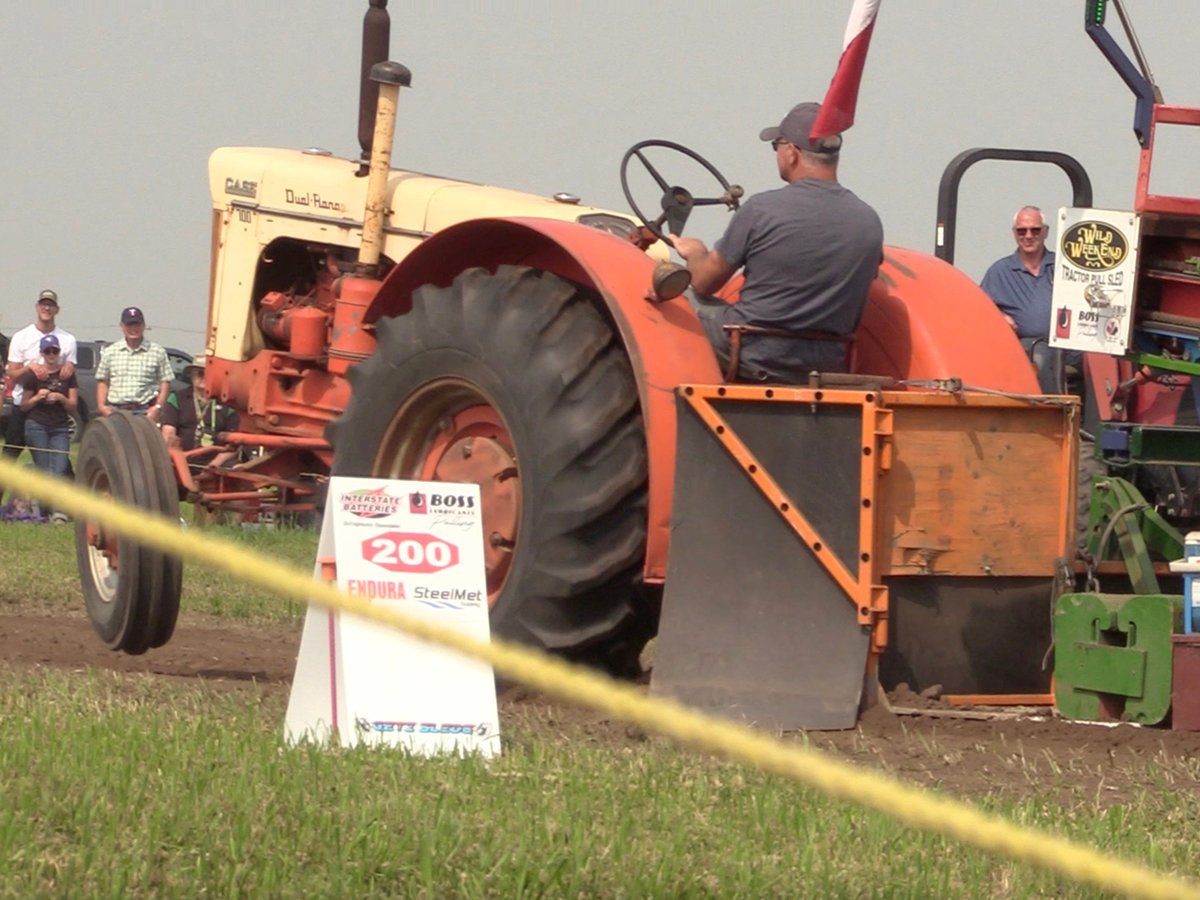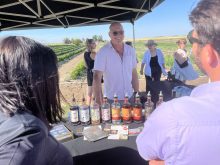PINCHER CREEK, Alta. – Armed with rubber gloves and garbage bags, they come down to the creek by the carload in search of blueweed.
The noxious, non-native plant first appeared after a major flood in 1995 and now grows alongside the 70 kilometre Pincher Creek in the southwestern corner of Alberta.
A campaign to fight the weed has moved beyond the efforts of individual landowners. It is now a community event organized by the Pincher Creek Watershed Group that involves dozens of volunteers each July.
Local cattle rancher Brad Bustard, the group’s chair, said the weed collecting event combines stewardship work with community fun, featuring food and entertainment.
Read Also

Vintage power on display at Saskatchewan tractor pull
At the Ag in Motion farm show held earlier this year near Langham, Sask., a vintage tractor pull event drew pretty significant crowds of show goers, who were mostly farmers.
Bustard said many of those participating rely on the creek as a water source for their livestock and homes.
It represents the largest watershed in southern Alberta, a water system that begins in the mountains, feeds the Oldman River and flows into the South Saskatchewan River.
“Ninety percent of the water flowing through this watershed comes from the mountains. If poorly managed, people downstream will notice,” he said.
The blueweed campaign is one example of many grassroots conservation efforts underway in the province, said Margaret Glasford of the Alberta Stewardship Network.
Glasford and the Pincher Creek group were among those receiving the 2007 Countryside Canada awards.
Wildlife Habitat Canada, Agriculture Canada and the Canadian Federation of Agriculture founded the awards, which recognize and promote land stewardship and wildlife habitat conservation in the agricultural community.
Glasford started her stewardship work studying water quality on Gull Lake, west of Lacombe, Alta.,where her family had a summer home.
From that volunteer experience, she saw first hand the impact humans and other sources have on a water body. She witnessed the rise of a conservation movement and saw the need for groups like hers to connect with others.
Glasford helped create the Alberta Stewardship Network (ASN) in 2004 and served as its chair until this year.
“Having come from one of those groups, I knew how difficult it was to get information and funding,” she said.
Looking back on her Gull Lake work, Glasford said there are regulations in place today that were not there when she started.
“ASN is making a difference. We have to keep working to bring that to the fore,” she said.
ASN’s role is to identify stewardship work, create a directory of groups and support organizations and reward their efforts.
“We got to know who they were and found out what we could do for them,” she said.
Twenty-five percent of the groups the network funds are agriculture-related organizations, she said.
Through conferences, newsletters, e-bulletins and an 877-727-5276 phone number and with support from Alberta Environment’s Water for Life strategy, ASN relays its support for best management practices, pasture management, grass and woodlands maintenance and wildlife habitat.
It encourages the establishment of shelterbelts and promotes the appropriate management of farm chemicals and livestock manure.
For the Pincher Creek group, support from ASN, corporations and the local community has enabled it to broaden its mandate from picking weeds along the creek, said Bustard.
In addition to creating an area history book, it has hosted demonstrations of off-creek watering sites for livestock, explored fencing to control livestock access to the creek and helped farmers learn more about pasture management.
Bustard conceded the group’s work remains a tough sell in a community used to traditional ranching practices.
“The old farmers get their backs up,” he said.
He believes there is room to accommodate both new and old ways.
“There are benefits to grazing it down but it’s a fragile system and you can’t just turn your back on it and ignore it,” Bustard said. “It has to be properly managed.”
















